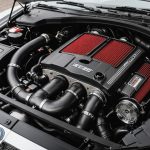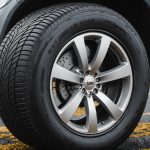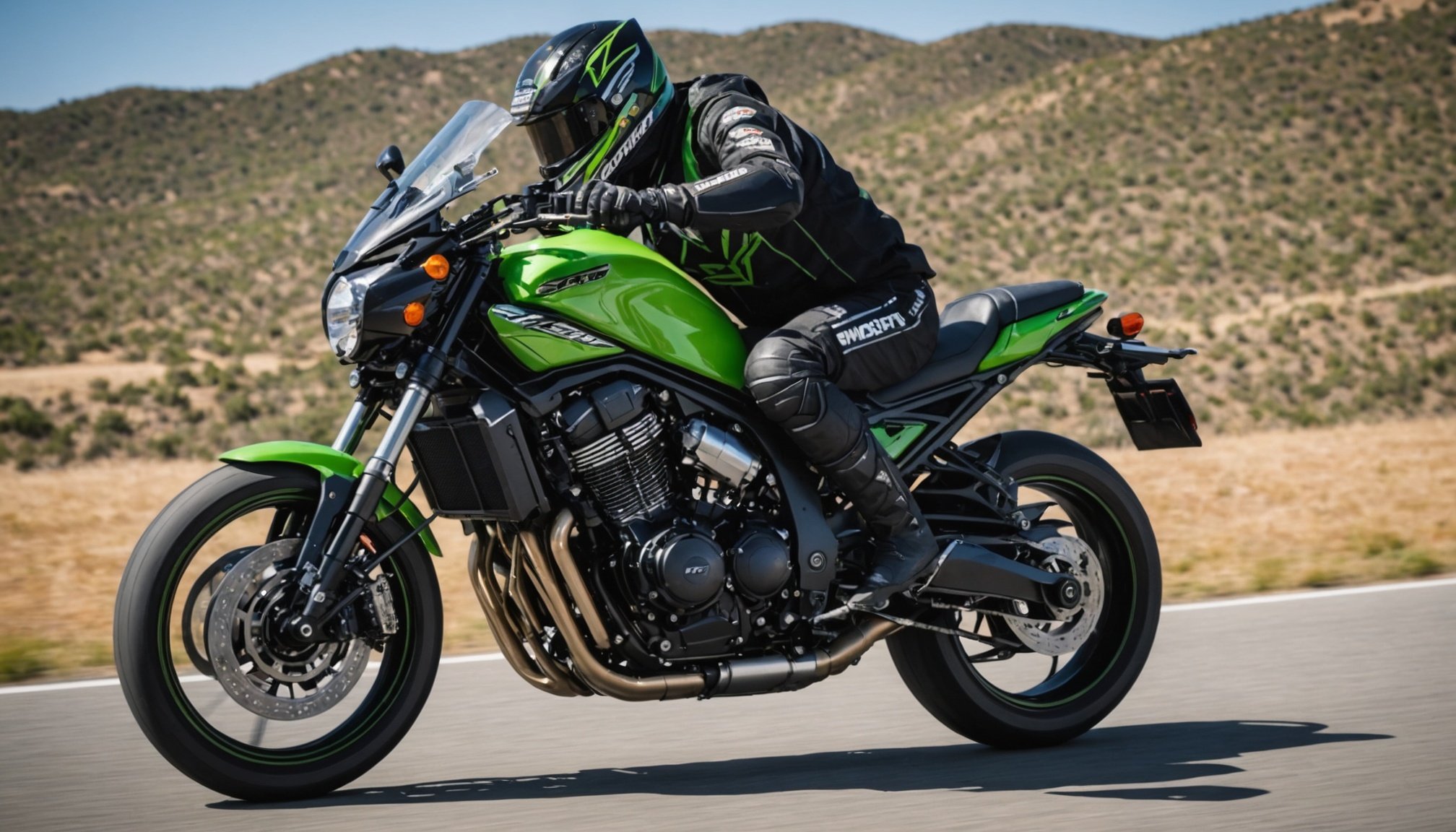Understanding the Importance of Suspension in Performance Riding
In the world of performance riding, the role of suspension cannot be overstated. Suspension impacts handling and stability on the track, acting as a crucial interface between the motorcycle and the surface. Proper suspension optimization ensures that riders can achieve the best possible track performance. It involves balancing the load between wheels, absorbing shocks, and maintaining contact with the track, enhancing both safety and speed.
Adjusting suspension settings to match individual riding styles and track conditions is vital. Riders differ in their preferences for stiffness or softness, influenced by body weight, riding style, and the nature of the track. For example, a track with multiple tight corners might benefit from a stiffer setup to maintain stability through turns. Conversely, a softer suspension could absorb bumps more effectively on uneven surfaces.
Also to read : Rev up your ride: enhance your yamaha mt-10”s throttle response with expert ecu tuning
The Kawasaki Z900 comes equipped with a robust suspension system designed to cater to diverse performance needs. Key features include adjustable preload, compression, and rebound dampers, allowing riders to fine-tune their bike’s response for optimal track performance. These customization options empower riders to translate their unique capabilities into superior track performance, showcasing the critical role of suspension in high-speed maneuvering and precision control.
Baseline Suspension Settings for Kawasaki Z900
Establishing baseline settings for your Kawasaki Z900 is essential to achieving balanced track performance. These suspension adjustments serve as a starting point, allowing riders to identify what changes may be needed for optimal handling.
Also read : Unlocking peak performance: customize your ducati panigale v4”s suspension for every adventure
To accurately measure current suspension settings, begin by recording the sag, both static and rider sag, using a simple tape measure. Static sag should be set with the motorcycle on its own weight, which is typically around 20-30mm. Rider sag, when the motorcycle is loaded with the rider, should measure between 30-40mm, offering a comfortable initial setup for most riders.
When adjusting preload, the initial target is to establish the appropriate sag mentioned above. Once preload is set, move on to tweaking compression and rebound dampers. Start with default factory settings, then make adjustments incrementally. For those unfamiliar, compression damping controls how quickly the suspension compresses, while rebound damping regulates how quickly it returns to its original position.
If you’re adjusting for personal preference, always make changes in small increments and test ride to feel the difference. Keeping a detailed log of these motorcycle setups and their resulting track performance can provide valuable insights over time, helping refine settings for varied riding conditions.
Upgrading Suspension Components
Upgrading components can significantly enhance the Kawasaki Z900’s performance improvements, offering enthusiasts a more refined riding experience. Aftermarket parts such as shocks, springs, and fork modifications are popular choices among riders seeking to push their bikes’ capabilities.
Common Suspension Upgrades
Many riders opt for aftermarket shocks to achieve a more responsive ride. These shocks can offer improved damping suited for various conditions, enhancing comfort and control. Upgraded springs can address weight distribution, allowing finer suspension upgrades that maintain balance during aggressive maneuvers. Fork modifications, such as cartridge kits, provide better front-end stability, essential for precision handling on challenging tracks.
Benefits of Upgraded Components
Embracing specific suspension upgrades can lead to noticeable enhancements in cornering stability and overall ride quality. Better components often translate to reduced vibration, smoother transitions, and increased rider confidence. Moreover, tailored configurations ensure that the suspension system complements the bike’s power, improving lap times and ride consistency on diverse surfaces.
Choosing the Right Upgrade
Selecting the correct suspension components requires careful consideration of factors such as weight, riding style, and track usage. Riders must prioritize compatibility and quality, assessing how each upgrade will interact with their existing setup. Consulting with experts or experienced riders can provide valuable insights, guiding the selection of aftermarket parts that best align with performance goals.
Fine-tuning Suspension Settings for Track Conditions
Fine-tuning your Kawasaki Z900’s suspension is crucial for optimal performance across diverse track conditions. Suspension settings need to adapt to varying surfaces, from smooth asphalt to bumpy terrain, and even changing weather conditions, like wet or dry tracks.
Different surfaces demand specific adjustments; soft settings might improve grip on bumpy tracks, while firmer setups can enhance stability on smoother tracks. By testing different suspension settings during practice sessions, riders can observe how their bike handles and adjust accordingly for maximum grip and performance.
Documenting every adjustment and its impact during and after each ride allows for methodical evaluation, offering invaluable insights for future sessions. This is essential for identifying which changes yield the best results under particular track conditions.
A practical approach involves altering one parameter at a time, whether that’s compression, rebound, or preload, as this ensures precise understanding of the effects of each tweak. This gradual and focused methodology aids in avoiding confusion and helps dial in the perfect setup.
Fine-tuning suspension settings not only leads to improved lap times but also boosts rider confidence and safety. With these adjustments, your Kawasaki Z900 can perform at its best, regardless of what the track throws your way.
Common Suspension Pitfalls to Avoid
While optimising the Z900’s suspension is essential, common suspension mistakes can counteract intended improvements. Rider errors often stem from over-adjusting settings, impacting motorcycle performance and stability.
Identifying Common Errors
Riders frequently err by setting suspensions too hard or soft, usually misunderstanding how adjustment affects track performance. Overly stiff settings can lead to reduced shock absorption, causing the bike to handle poorly over uneven surfaces. Conversely, excessively soft settings may cause instability, especially during aggressive turns.
Avoiding Over-Adjustment
Maintaining balance is crucial. Riders should resist the urge to make drastic changes without testing. Begin with baseline settings and adjust gradually. If your setup feels off, focus on one aspect at a time: preload, compression, or rebound. Incremental changes provide clarity on what’s working versus areas needing further tweaking.
Recognising Limitations
While adjustments can significantly enhance performance, there are limits. Every suspension system has thresholds beyond which no further improvements can be made without causing detriment. For intricate issues, consulting a professional helps uncover potential errors and ensures optimal performance. Such expertise is crucial, particularly when contemplating aftermarket parts, ensuring alignment with your unique goals and riding style.
Expert Tips for Maintaining Suspension Performance
Ensuring your Kawasaki Z900 maintains optimal suspension performance requires commitment to regular care and suspension maintenance. A key aspect of this maintenance routine involves consistent inspections of suspension components. Regular checks help identify any worn components that may undermine the bike’s handling and stability.
Neglecting to replace worn components can lead to compromised performance and potential safety hazards. Critical parts such as seals, bushings, and pivot bearings should be frequently inspected for wear and replaced as necessary. This proactive approach not only preserves suspension quality but also extends its performance longevity.
Regular attention to suspension maintenance involves periodic lubrication of moving parts. This simple yet effective step ensures smooth operation and minimizes friction-related deterioration.
Additionally, maintaining the correct suspension settings is vital. Riders should periodically revisit their suspension setup to ensure it compensates for any changes in riding style, weight or track conditions over time. Aligning these settings with personal preferences enhances precision and track performance.
Lastly, storing your Kawasaki Z900 in a controlled environment can prevent moisture-related damage, further contributing to suspension longevity. By adhering to these expert tips, riders can significantly preserve the quality and performance of their bike’s suspension system.
Comparing Kawasaki Z900 Suspension with Other Models
When examining model comparisons, the Kawasaki Z900’s suspension stands out in its class. Its unique balance of responsive handling and performance makes it a formidable contender among sports motorcycles. To appreciate its capabilities, we must consider how it contrasts with its competitors.
Performance Comparison with Competitors
In terms of suspension differences, the Kawasaki Z900 excels in delivering consistent track performance. Unlike many rivals, its suspension system features adjustable preload, compression, and rebound dampers, allowing for precise tuning. This is beneficial for riders seeking a more personalised setup, which is often lacking in factory options from brands like Yamaha or Honda.
Unique Features of Kawasaki Z900 Suspension
A defining characteristic is its versatility; the Z900 can be tailored for various track conditions — from tight corners to rugged terrains. These capabilities are rarely matched by other models, which often require additional suspension upgrades to reach similar performance heights.
Lessons from Other Models
However, there’s always room for improvement. Observing performance analysis of models such as the Ducati Monster or BMW F900R reveals opportunities. These models emphasise lightweight components for agility, a concept that Kawasaki riders might consider when upgrading their suspension for enhanced suspension optimization. By integrating learnings from diverse models, the Z900’s suspension system can potentially be refined further.











